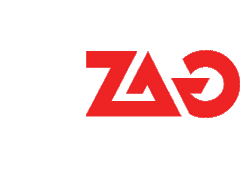
Empower Your Team through Leadership Development
Introduction
From adapting to the latest technological trends such as Enterprise Resource Management (ERP) solutions to concerns over privacy and data collection to the day-to-day tasks of hiring and retaining competitive talent, there’s much to be preoccupied with in leading ad agencies.
But in today’s fast-paced and competitive agency landscape, there is perhaps no greater task than the development of your agency’s internal team resources. Sure, it’s important for HR to attract world-class talent, but this is only the first step in building a successful team. After you have a full set of creatives, management, executives, and HR, the next step is to take your team through the process of leadership development.
Three Steps for Leadership Development
It’s important to know how critical such processes are and to recognize, in the case that you already have such processes underway, when they need to be updated or revamped. According to a recent study, nearly two-thirds of companies say their current leadership development processes deliver only some or “little to no value.” Those numbers should cause great concern, especially if you consider your agency as one of those companies whose leadership development process isn’t delivering.
So, how should such processes unfold? What does an effective leadership development plan entail? For the rest of this article, we’ll outline three important steps of the leadership development process—performance reviews, coaching, and rewards—along with ways that HR can assist executives and managers in making the most out of your agency’s team. Beyond hiring great talent, these steps will empower your team to do great things.
Performance Reviews
The first step in leadership development is creating a series of performance reviews for your team members. Reviews should be periodic. They can happen once or twice each quarter, or, as an alternative, they can occur bi-annually. The most obvious reviewers will be managers and executives who oversee the work of each team member.A questionnaire should be sent to each. The questionnaire should contain both quantitative inquiries (items that can be measured in discrete amounts such as delivered products, satisfied clients, etc.) and qualitative questions (e.g. What is it like working with this team member? What are their strengths? What are their weaknesses? In what areas can they improve?). In addition to managers, questionnaires can also be sent to co-workers who have experience with the team member.
Following the solicitation of the questionnaires, a performance review meeting should be initiated. During this time managers and/or executives can discuss the feedback submitted from fellow team members and address any areas of concern while praising the team member in areas that seem particularly strong. Clients can also be queried for feedback during this phase as well.
Coaching
Yet managers are the backbone of this process. Although HR is increasingly involved in agencies’ workflow (including sales pitches), it’s important managers define and develop the agency’s leadership. Following the performance review, a series of coaching sessions should be scheduled according to the indicated needs of the team member.
For instance, if time management consistently appears as a pain point during the performance review, then a manager may wish to meet with the team member and check in about how they are meeting specific deliverable dates and timelines. What are some of the specific challenges the team member is facing around time management? How can these challenges be addressed?
This process is, first and foremost, about unlocking the potential inherent in your team members. Through these coaching sessions, your team members learn valuable lessons that pertain directly to current and ongoing projects. The coaching process should therefore use positive reinforcement while creating a “safe space” for the team member to discuss any challenges in meeting the demands of the job. Positive reinforcement, alongside constructive criticism, creates incentives for success.
Rewards
When a team member exhibits consistent improvement measured through a series of performance reviews, then an agency may wish to reward them with a salary or rate increase. Again, positive reinforcement provides incentives for individual achievement and success. At the same time, such an approach “socializes” the phenomenon, so that it works even more effectively on a large scale.
Promotions in the title are especially effective on this level because, unlike salary levels at many companies, titles are public. Just imagine how incentivizing it can be for a designer who, after receiving consistently positive performance reviews—along with some specific positive feedback from clients—receives a change in title, from Designer to Senior Designer. Fellow team members will then be encouraged, similarly, to strive for excellence through their example.
